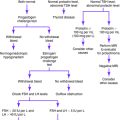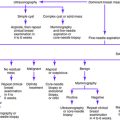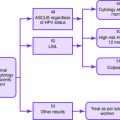Chapter 25 OSTEOPOROSIS
Primary osteoporosis results from deterioration of bone mass that is related to aging and decreased gonadal function but is not associated with any chronic illness. Because primary osteoporosis results from decreased gonadal function, early menopause or premenopausal estrogen deficiency may hasten the development of osteoporosis in women. Other risk factors for primary osteoporosis include female gender in general, white or Asian ancestry, sedentary lifestyle, tobacco use, low calcium intake, and low body weight.
Risk Factors for Osteoporosis
Suggested Work-Up for Patients with Suspected Secondary Osteoporosis
| Serum creatinine measurement | To evaluate for renal disease |
| Alanine transaminase (ALT) and aspartate transaminase (AST) measurement | To evaluate for liver disease |
| Alkaline phosphatase measurement | To evaluate for liver disease, Paget disease, or other bone pathologic processes |
| Albumin measurement | To evalvate for malnutrition |
| Serum calcium measurement | Decreased level may indicate malabsorption or vitamin D deficiency; increased level may indicate primary hyperparathyroidism or malignancy |
| Serum iron and ferritin measurements | Levels are increased with hemochromatosis |
| Serum phosphorus measurement | Decreased level may indicate osteomalacia |
| Thyroid-stimulating hormone (TSH) measurement | To evaluate for hyperthyroidism |
| Serum protein electrophoresis (SPEP), measurement of erythrocyte sedimentation rate (ESR), complete blood cell count (CBC), serum calcium measurement, parathyroid hormone (PTH) measurement | Abnormal SPEP, elevated ESR, anemia, hypercalcemia, and depressed parathyroid hormone level are suggestive of multiple myeloma |
| Estrogen level measurement | Decreased levels in premenopausal women are suggestive of hypogonadism |
| 1,25-Hydroxyvitamin D measurement | Elevated levels occur with hyperparathyroidism |
| 25-Hydroxycalciferol measurement | Decreased levels suggest vitamin D deficiency |
| 24-hour urine calcium measurement | Decreased urinary calcium excretion is suggestive of malabsorption or vitamin D deficiency |
Additional Work-Up
| Dexamethasone suppression test | May be indicated when Cushing syndrome is suspected |
| Stool fat quantification or xylose breath test | Used when there is a history of gastrectomy or diarrhea to evaluate for malabsorption |
Harper KD, Weber TJ. Secondary osteoporosis. Diagnostic considerations. Endocrinol Metab Clin North Am. 1998;27:325-348.
Kenny AM, Prestwood KM. Osteoporosis: pathogenesis, diagnosis, and treatment in older adults. Rheum Dis Clin North Am. 2000;26:569-591.
Simon LS. Osteoporosis. Clin Geriatr Med. 2005;21:603-629. viii
South-Paul JE. Osteoporosis: part I: evaluation and assessment. Am Fam Physician. 2001;63:897-904.
Tresolini CP, Gold DT, Lee LS, editors. Working with Patients to Prevent, Treat and Manage Osteoporosis: A Curriculum Guide for Health Professions, 2nd, San Francisco: National Fund for Medical Education, 1998.





